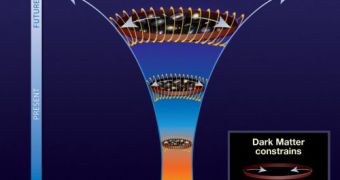A group of Taiwanese researchers are suggesting a new theory according to which the Universe has always existed and there was no need for a Big Bang.
Everybody got used to the Big Bang theory that says that the Universe was a hot dense place and all of the sudden it expanded, and it still is 13.7 billion years later.
Cosmologists have gathered many theories and evidence that this initial moment actually existed, and before it there was nothing, but one man is doubting all of this.
Professor Wun-Yi Shu from the Institute of Statistics at the National Tsing Hua University has created a new model that suggests that the universe has always been there, and the Big Bang never existed as it wasn't necessary.
Shu says that all cosmology problems can be solved by his new theory, that eliminates problems like flatness and the horizon, by using new geometry.
In order to explain the accelerated expansion of the universe, physicists invoke a specific form of anti-gravity, called “dark energy”.
The problem is that scientists never found this mysterious form of energy, that is responsible for 75% of the universe's energy density.
In Einstein's theory of relativity, he introduced the “dark energy” factor, a cosmological constant, so that the Universe don't collapse on itself, so there is actually nothing to find, and Shu even says that dark energy is not necessary.
He developed a new model that makes four statements: first of all, he says that the speed of light and gravity are not constant, because they vary with time as the universe expands.
The second claim is that time is infinite and the third is that the spatial part of the Universe – the part of spacetime that is not temporal, takes a 3-sphere form - the four-dimensional counterpart to a sphere.
Finally, Shu says that even though we know that the universe is currently accelerating, this doesn't mean that it always has been, and in his model, the Universe is also decelerating.
This new spacetime describes an eternal and cyclic universe, with dynamic physical laws, according to Environmental graffiti.
The scientists compared his model with existing information from the analysis of type 1a supernovae and found that his “theoretical predictions... fit the observations quite well.”

 14 DAY TRIAL //
14 DAY TRIAL //